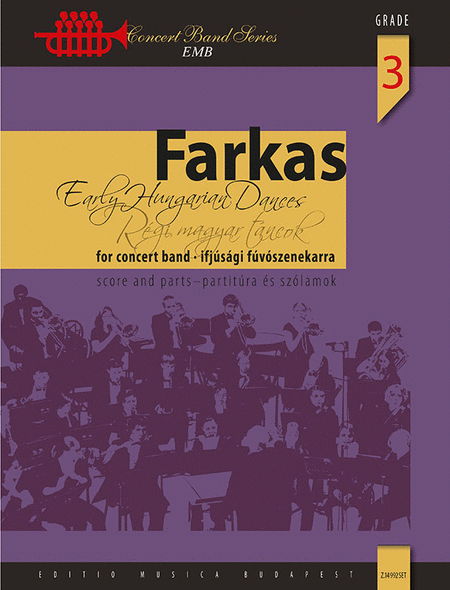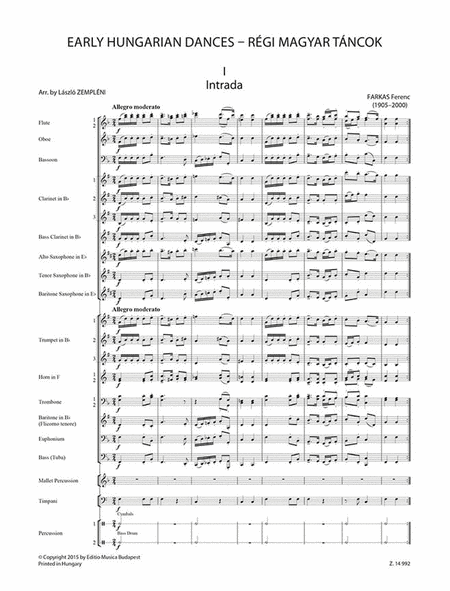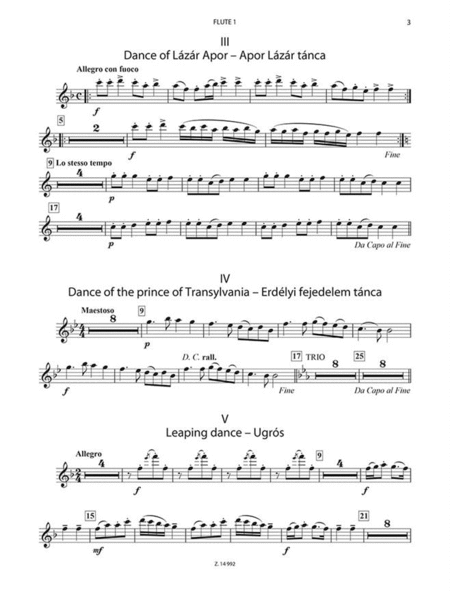Early Hungarian Dances
-
Ships in 4 to 6 weeks
Details
Description
SKU: BT.EMBZ14992SET
Composed by Ferenc Farkas. EMB Concert Band Series. Concert Piece. Set (Score & Parts). Composed 2016. 274 pages. Editio Musica Budapest #EMBZ14992SET. Published by Editio Musica Budapest (BT.EMBZ14992SET).English-Hungarian.
The composer wrote of his work as follows: In the music of Hungary, folk songs are manifestly of great importance, on the other hand our ancient airs and dances play a modest role. For this work I have been influenced by dances of the 17th century, written by unknown amateurs in a relatively simple style. Most of these dances were recorded between the 14th and 18th centuries under the usual form of tablature notation. My interest in this music was first captured in the 1940s. I was so fascinated that I decided to give these melodies new life. I fitted the little eight-bar dances together into ternary and rondo forms, and leaning on early Baroque harmony and counterpoint, Iattempted a reminiscence of that atmosphere of the provincial Hungarian Baroque.
So schrieb der Komponist über sein Werk:
In der ungarischen Musik sind natürlich die Volkslieder sehr wichtig, doch die alten Melodien und Tänze spielen in unserer Musik eine geringere Rolle. Für dieses Werk habe ich mich von Tänzen des 17. Jahrhunderts anregen lassen, die von unbekannten Dilettanten, also ziemlich einfach, geschrieben worden waren. Die meisten waren in der zwischen dem 14. und 18. Jahrhundert geläufigen Tabulaturschrift notiert. In den vierziger Jahren begann ich mich erstmals für diese Musik zu interessieren. Ich war davon so fasziniert, dass ich mich entschloss, sie wieder zum Leben zu erwecken. Ich fügte die kleinen achttaktigen Tänze zu dreiteiligen undRondoformen zusammen. Ausgehend von der frühbarocken Harmonik und Kontrapunktik habe ich mich in einer Art ungarischen provinziellen Barocks versucht.“.



 Share
Share